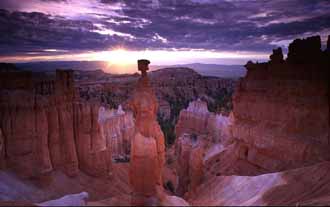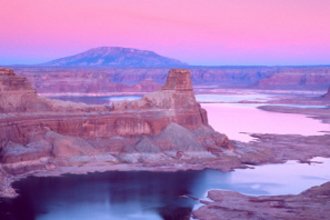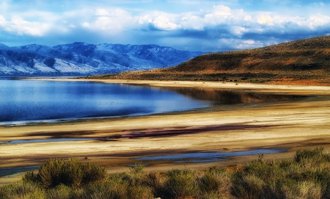That You Were Never The Same?
The Tiger Salamander … Utah's Only Salamander
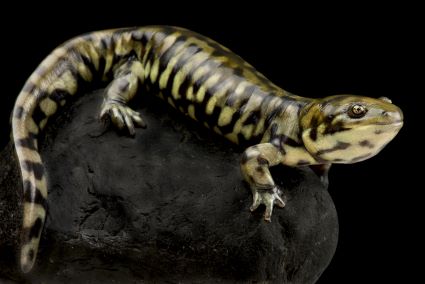
Introduction
So why I would I write about something as innocuous as the Tiger Salamander on a Utah Travel site? Well, it’s because I came across this creature when doing research for my blog. I had no idea that this creature existed or that there were any salamanders in Utah let alone only one kind.
It is kind of like my page on the yellow-bellied marmot. I had no idea they lived in Utah and I had certainly never seen one until recently. I still have never seen a Tiger Salamander so the photos on this page aren’t mine. Maybe some day I’ll see one.
Utah is known for its contrasting scenery. Yet, while these prominent landscapes dominate the state's identity, there exists another more subtle world beneath the surface.
In the crevices of the canyons, the edges of the desert's oases and the valleys between the mountains, one can discover damp, hidden corners teeming with life. And within this secretive realm, there thrives a creature both fascinating and often overlooked – the Tiger Salamander.
This remarkable amphibian, with its vibrant patterns and intriguing habits, is not just another creature in Utah's diverse wildlife population. It stands alone in its distinction because it is Utah's only salamander species. From the water bodies where it breeds to the burrows it calls home, this amphibian has carved out its niche in the ecological chain.
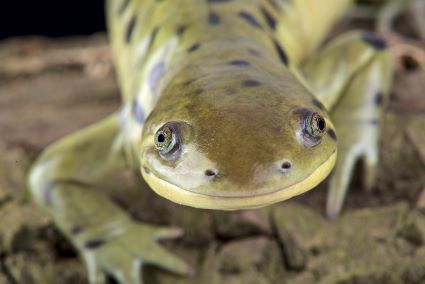
Physical Characteristics
The first thing that draws attention to the Tiger Salamander (Ambystoma tigrinum), at first sight, are the vivid tiger-like stripes and blotches that adorn its body. Evoking imagery of the fierce jungle predator whose name it shares, these patterns are not mere ornamental designs.
Primarily black with striking contrasts of yellow or sometimes greenish markings, they function as more than just aesthetics. These patterns offer the salamander an ingenious camouflage blending seamlessly with the dappled sunlight, shadows and undergrowth of its native habitats.
Unlike the rough textures of many terrestrial creatures, the salamander’s skin is super smooth, almost velvety to the touch. It is slippery when held. This moist skin not only facilitates respiration but also helps this creature move through its environment.
Its stout body, which speaks of its adaptability and resilience, is complemented by a broad head that houses keen eyes. Those eyes are always on the lookout for prey or potential danger.
Supporting this structure are sturdy limbs each ending in toes that help it maneuver through varied terrains be it wetlands or dry burrows. Tiger salamanders grow to be approximately six to eight inches (15 to 20 centimeters) long.
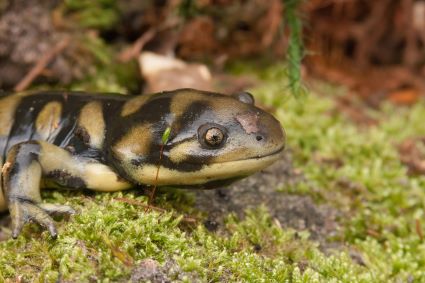
Habitat
As one investigates the habitat these salamanders live in, it becomes evident they favor the serene beauty of wetland environments. Utah, with its diverse landscapes, offers an abundance of this kind of habitat.
These salamanders thrive at a wide range of altitudes. From the warmth of the low valleys where the earth meets vast waters to the cooler mountain regions where mists often kiss the surface of secluded water bodies, the Tiger Salamander finds its niche
However, as much as they are creatures of beauty and grace, they know their place. Certain elements in their habitat are non-negotiable. First is the presence of standing water. Not merely for consumption, water serves as a cradle of life during breeding seasons.
The Tiger Salamander seeks shelter and solitude also. This is where burrows come into play. These moist, cool recesses in the earth offer respite from predators and the elements.
They serve as sanctuaries where salamanders can rejuvenate and retreat. They carve these homes themselves or take over abandoned spaces left behind by other creatures.
Most of their days are spent nestled underground shielded by the protective cover of their burrows. It is a testament to the adaptability of the Tiger Salamander that, while drawn to the water's allure, it chooses the stability and safety of terrestrial life.
Lifecycle and Reproduction
The Tiger Salamander's lifecycle is a fascinating journey transitioning from water to land. Their life begins as aquatic larvae resembling tiny tadpoles with external gills. As they mature, these gills gradually recede, limbs develop and the larvae transform into juvenile salamanders ready to make their way onto land.
Reproduction typically occurs after the winter months where males deposit packets of sperm called spermatophores. Females pick these up and fertilize their eggs internally. A single female can lay hundreds of eggs often attaching them to underwater vegetation. After hatching, the larvae will spend several months in water before undergoing metamorphosis.
Some Tiger Salamanders have been known to live as long as 15 years. Many people keep one or two of them as pets. They are not overly aggressive but if you are going to keep two of them together, it is recommended they be of similar size.
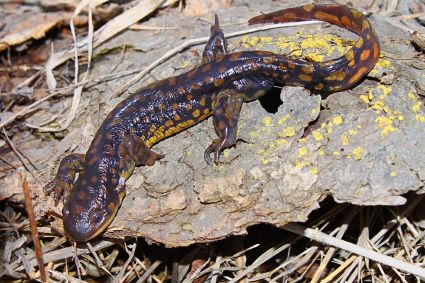
Diet and Feeding Habits
The diet of the Tiger Salamander is as varied as the ecosystems it inhabits. These opportunistic feeders consume a range of prey from insects and spiders to worms and small invertebrates. As larvae, their diet primarily consists of aquatic invertebrates including zooplankton.
Their hunting technique is mainly ambush-based where they sit and wait for their prey to come within range before pouncing with rapid speed.
Predators and Threats
Being a small to mid-sized amphibian, Tiger Salamanders face threats from various predators throughout their lives. Birds, snakes, and even larger mammals like raccoons are known to feed on them. The aquatic larvae are at risk from fish, other amphibians and even predatory aquatic insects.
Apart from natural predators, habitat destruction, pollution and the introduction of non-native species pose significant threats to their populations.
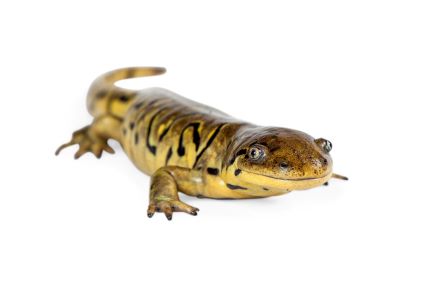
Conservation Status
Currently, the Tiger Salamander's status varies by region. While they are relatively abundant in many parts of their range, localized populations might be at risk due to the previously mentioned human-induced threats. In Utah, preserving wetland habitats and minimizing pollution are crucial steps in ensuring the continued survival of this unique amphibian.
Unique Adaptations
One of the Tiger Salamander's most intriguing adaptations is its ability to undergo neoteny, a phenomenon where the salamander retains its aquatic larval characteristics throughout its life. This means that in some populations, individuals might never undergo complete metamorphosis, remaining in their aquatic form while still being capable of reproduction.
Interesting Facts
- While Tiger Salamanders are solitary creatures, they can sometimes be seen in large numbers during the breeding season when they migrate to communal breeding ponds.
- Tiger Salamanders have a robust regenerative ability. They can regrow lost limbs, parts of their heart, spinal cord and more.
- Their skin secretes a mild toxin that can deter predators making them an unpalatable meal choice for many potential threats.
Conclusion
The Tiger Salamander, with its striking appearance and unique lifecycle, is undoubtedly one of Utah's natural treasures. As the state's only salamander, it offers a glimpse into the rich biodiversity that often goes unnoticed amidst Utah's more famous landscapes.
Protecting this species is not just about preserving a single amphibian but safeguarding the intricate web of life that it represents. The Tiger Salamander stands as a sentinel of Utah's lesser-known ecosystems.
While it may not claim the celebrity of some of the state's other diverse wildlife examples, its presence expresses an equally compelling story. As the sole salamander species gracing Utah's outdoors, the Tiger Salamander serves as a symbol of adaptability and survivability.
Have A Great Story About Utah Wildlife?
Do you have a great story about Utah Wildlife? Share it!



